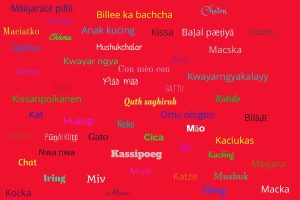There are many languages in the world, and some of them are so difficult to learn that they can take up to twenty years to master. In this blog post, we will explore five of the hardest languages in the world. If you’re looking for a challenge or want to expand your horizons beyond English, then these might be perfect for you!
List of 5 Difficult Languages of the World
We are listing 5 of the most difficult languages according to learning. We’ll give you a brief overview of each language and then some basic vocabulary that you might need if you’re interested in learning them.
For many people, there’s a strong desire to learn a new language for personal reasons or to communicate with others from different cultures. However, not all languages are easy to learn so it can be challenging at times.
The 5 languages we have chosen here are among the most difficult ones out there because they’re either tonal or use complex writing systems such as Kanji, which is used in Japanese. Let us know what your favorite difficult language is by leaving a comment below!
1 – Mandarin Languages
Mandarin is a major language of China, Taiwan, and Singapore. Mandarin is the most spoken language in the world. There are around one billion speakers and 450 million native speakers.
Mandarin language requires a great deal of study to master. It’s full of idioms, aphorisms and homophones which makes it very hard for an English speaker without knowing some culture too- not just the basics like letters!
It uses four different tones to indicate meaning when spoken: high level tone (55), mid rising tone (35), low dipping tone (214), and high falling tone (51). In addition, it also has two written forms: Simplified Chinese and Traditional Chinese. The former was established in the 1950s by Communist China while the latter is still used today primarily in Taiwan.
2 – Arabic Language
Arabic is a Semitic language that has its roots in Saudi Arabia. Arabic has many dialects, which makes it difficult to learn as a second language. It was originally written from right-to left but now there is no set direction.
Arabic is the second most challenging language for English speakers because of its writing system which consists of 4 different forms depending on where they are placed in words and vowels not being included when writing down the word or phrase makes it very difficult to master overall therefore making this perhaps one step up from Mandarin Chinese as far difficulty goes since there’s more than just sounds you have be mindful off while speaking something correctly without making mistakes
It uses the root system of trilateral verbs to express ideas more precisely than English does. However, it takes up to 25 years for native speakers before they are fully fluent because there are many dialects and subtle changes in pronunciation within these variations that must be learned.
3 – Japanese Language
Japanese is a language spoken in Japan that uses three different alphabets: Hiragana, Katakana, and Kanji.
The writing system can be challenging because if you make even a small mistake your sentence will not make sense at all!
Each alphabet also has two different styles of writing called “renga” (formal) and “furigana” (casual). The word structure in the English language follows subject – verb – object while Japanese does not have this order at all.
Instead it can be either SVO or SOV depending on what sounds best when speaking. This makes grammar very difficult for beginners to understand even if they are familiar with other languages like Polish or Chinese which do follow the same rules as English.
4 – Hungarian Language
Hungarian is yet another language that uses an unfamiliar alphabet, with characters being spread across two blocks instead of lined up in a row like most western languages use.
The Hungarian language has a lot of different cases, suffixes that determine tense and possession instead of word order. In addition to this there are also important cultural overtones which make it really difficult to learn alone as well!
Hungarian used to use Latin script until 1945 when they adopted their own way of communicating through symbols that were unique only to them. The pronunciation is also very unique and so new words are constantly being created.
This makes this writing style more difficult for English speakers to imitate and can take some getting used to! Another challenging aspect about Korean is that there are no spaces between words, making it even more difficult for English speakers to understand.
5 – Korean Language
One of the most challenging aspects about learning Korean is that this alphabet can be split into three different groups which all have their own unique characteristics and uses! This causes some differences in pronunciation depending on where your native language falls so you will need to take time to get used to it.
Korean is a strange language in that it has its own set of rules and does not appear to be related at all. There are many challenges for learners, such as the complex grammar or unique word order which can seem overwhelming if you don’t know how these work already from previous languages learned.
Korean writing system consists of 16 consonants, 14 vowels and 20 vowel combinations to form syllables which combine with the 24 letters of the Hangul alphabet.




